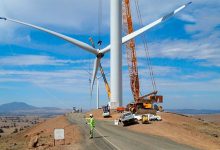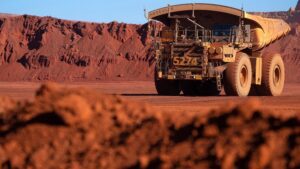Just when you thought we had a consensus emerging about how to decarbonise Australia, starting by transitioning the NEM to renewables and then electrifying transport and process heat, along comes the ETU in the shape of Chris Minns dog whistling the ALP diehards.
“Electricity is an essential service.” Try telling that to 50 million Indians who don’t have any. Food is an essential service and guess what, it’s manufactured and distributed by the private sector without any complaints.
“The private sector is responsible for high prices.” Up until gas and coal prices went up high consumer prices were mostly caused by spending in the wires and poles sector. That sector is regulated and conceptually it doesn’t matter whether private or public owned, it’s the regulator that determines the return.
What evidence/data there is suggests that any over-build was in the NSW and Queensland wires and poles sectors which, at the time, were publicly owned.
Total factor productivity measures suggested the NSW distributors, in particular, were overmanned and relatively inefficient. That’s part of the reason why they were put under one management for a while.
As for the generators and indeed retailers, try telling AGL, Origin or CLP shareholders that they have been making excess profits. What a laugh. Try telling all the small retailers that have gone to the wall about their excess profits.
It is certainly true that wholesale power prices were ridiculously high in 2022. It remains the case that the large coal and gas generators have a degree of pricing power during the transition.
Don’t forget the largest owner of coal generation is the Queensland government and, yes, you guessed it, wholesale prices were higher in Queensland in 2022 than in any other state. In fact, and contrary to public opinion, Queensland wholesale prices considered over the past 10 years have been marginally ($3/MWh) higher than NSW prices.

I don’t think the price difference has much to do with the form of ownership in this case. Rather it’s due to the supply-demand balance.
When more firming power is built, and assuming it’s built by other than the current owners and we get some competition into the market for firming, then prices will tend towards the “equilibrium” or right price.
It is impossible for anyone who has followed the electricity debate in NSW as closely as I have since the 1990s to want to go back to the dreadful years of John Roberts and Bernie Riordan. You can argue Mike Baird might have got a better price for Macquarie Generation, although the closure of Liddell is a lot earlier than the original business case. Certainly the buyers of Delta got a great deal. But hey, that is the nature of markets. Someone else could have bid. A great deal, or even a year of high prices doesn’t mean that there is market failure.
Emissions safeguard scheme
There are several things to say about the federal government’s proposed scheme, most of which can be implemented by regulation.
First: In the bigger scheme of things cutting down on the emissions caused by the mining and manufacture of gas and coal is worthy but largely useless. It’s the burning of the coal and gas that are the problem. You are not going to get into heaven on the back of good intentions with a safeguards scheme that doesn’t actually address the real problem. No, those good intentions only pave the way to hell. Politicians need to remember that ultimately future generations will judge them by their real achievements. That is why Hawke and Keating get such a good rap.
Secondly, it is fair enough that it’s hard to decarbonise steel, but as the electric compressor plan by Total for PNG LNG shows, progress is being made in industrial decarbonsiation. But it will be slow and so offsets are reasonable.
However, the ACCU scheme in Australia is not reasonable. Despite the Chubb inquiry, it’s fairly clear it’s full of flaws. Better to tighten the scheme up further, push up the ACCU price further, and hopefully even allow Renewable Energy Certificates to be used to satisfy the obligation.
Using the certificates, after all, is in line with the main method of decarbonsiation, which starts with decarbonsing electricity.
Past the VRE season peak
VRE [wind and solar] production was abut 71 TWh annualised and represented about 32% of the NEM over the past 30 days up a respectable 12TWh or 4% fromthe previous corresponding period. Add in another 5% of hydro and the total renewable share is over 37%.

That’s as good as it gets this season, though. Wind production is well down from its season peak and the solar curves have also clearly turned.

And so we enter the period where coal and gas start to regain the upper hand on pricing. Not that they ever fully lost it this season, or at least not in NSW and Queensland.
Looking at NSW prices, what has happened so far in 2023 compared to the same period in 2022 is that midday prices, when solar output is up, are lower than last year but overall prices are higher this year (by about $10/MWh) due to the higher peak evening prices and higher early morning prices.

It’s quite interesting really. Basically the problem is, as it is in most states, that there isn’t enough wind production. Wind is only 8% of NSW and actually down, year on year.
Compare that with South Australia, where wind is 44% of production (excluding imports).

The same effect is going on, South Australia has negative prices on average in the middle of the day and correspondingly even higher prices in the evening peak. Because gas generation and imports are more flexible than NSW, and for that matter Queensland coal, it’s easier for the gas generation to turn down in the middle of the day and then turn up and earn a return in the evening peak.
Gas ends up with $178/MWh average price and wind $55. If rooftop solar was sold into the market it would have received $12/MWh

This is the basic premise that gas is a price setter and the other fuels are price takers. Wind will get higher prices in NSW and Queensland because it just gets carried along for the ride in those states, at present, whereas in South Australia when there is lots of wind the price is low and vice versa.
So on average across the NEM prices are still high and actually a touch higher than last year, although not so that anyone would get excited.

And prices are high as far as the eye thinks it can see, other than in Victoria.









